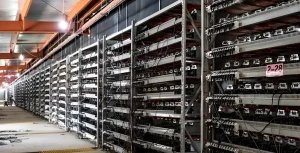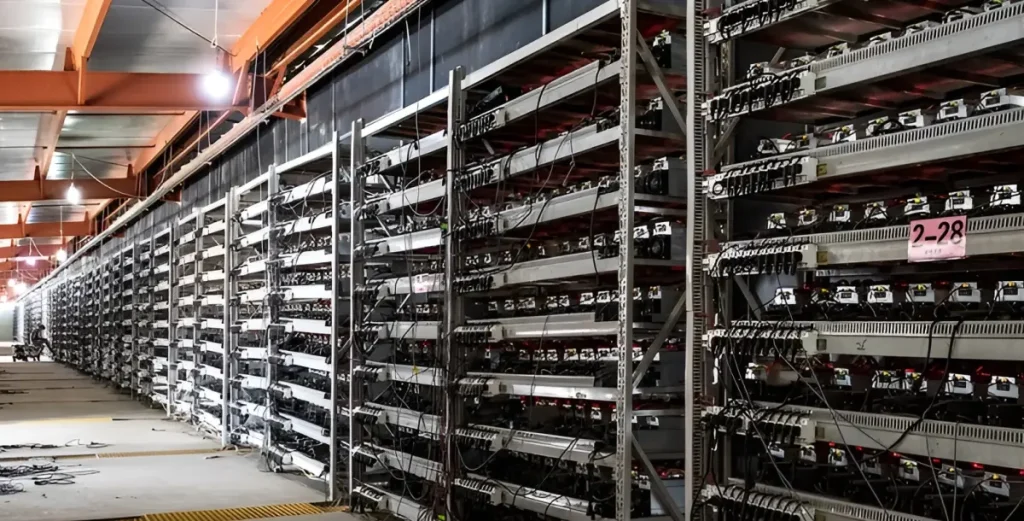Economic Impact of Crypto Mining 2025

Cryptocurrency mining is often seen as a fast track to local investment and infrastructure, but the reality is more complex. While mining can generate tax revenue, attract capital, and stimulate rural economies, it also comes with steep tradeoffs: from grid stress to emissions to economic volatility.
For business leaders, infrastructure operators, and policymakers, understanding the economic upside and downside of mining is essential. This article breaks down the key dimensions: how mining creates value, where it disrupts, and how the landscape is shifting in 2025.
Economic Contribution: Jobs, Revenue, and Infrastructure
Mining operations inject real money into local economies, particularly in regions with cheap energy and underutilized land. In the U.S., mining firms have poured hundreds of millions into places like Texas and Wyoming, where former industrial sites are being converted into digital asset data centers.
Kazakhstan offers another striking example. In 2021, crypto mining contributed over 1.5% of its GDP and brought in more than $1.5 billion in tax revenue before policy reversed course. These activities created demand for electrical upgrades, construction labor, internet infrastructure, and ongoing operational support.
Mining also tends to create high-skill roles, think data center technicians, network engineers, and energy consultants. Even if the headcount is lower than traditional manufacturing, these are often well-paid, specialized roles that ripple through local economies.
But at a Cost: Energy Displacement and Economic Strain
Crypto mining is among the most power-hungry digital industries. Bitcoin mining alone consumes an estimated 90–150 TWh annually, equivalent to the electricity use of Argentina or Sweden.
In regions where electricity is limited or subsidized, this demand can lead to higher costs for households and businesses, or worse, power shortages. Kazakhstan’s grid collapsed under mining pressure in late 2021, forcing emergency blackouts and subsequent regulation. Similarly, public backlash in New York led to a two-year moratorium on fossil fuel-powered mining.
Mining doesn’t just consume energy—it competes with other industries for it. In some regions, manufacturers have seen energy prices spike due to nearby mining farms. This dynamic can reverse economic gains by crowding out more job-dense, export-driven industries.
The Environmental Cost Often Goes Unaccounted
Many of mining’s externalities—emissions, e-waste, and land use—don’t appear on the balance sheets of the companies that cause them. According to the Cambridge Bitcoin Electricity Consumption Index, Bitcoin mining emits 60–75 Mt of CO₂ per year.
Some mining farms even revive retired coal and gas plants to access power, reversing years of progress in decarbonization. Others generate large volumes of e-waste from short-lifecycle ASIC hardware. While green solutions exist—such as hydro in Canada or stranded gas capture in the U.S.—they’re not always scalable and often require significant government or investor support.
For businesses looking to associate with sustainability, these optics matter.
Regulatory Environments: Incentives, Bans, and Everything in Between
Governments around the world are taking vastly different approaches to mining. China banned it outright. New York restricts it. Meanwhile, Texas and El Salvador promote it through tax incentives and dedicated infrastructure.
In 2025, the dominant trend is toward tighter regulation and grid-based accountability. Kazakhstan has introduced consumption-based taxes of up to $0.05 per kWh. Canada has capped electricity access for miners. The EU and U.S. are debating new disclosures for crypto-related emissions.
Businesses should expect that future mining will look more like a regulated utility—subject to scrutiny, permitting, and ESG reporting—than a freewheeling gold rush.
Geographic Realities: Why Location Still Determines Impact
The net effect of crypto mining depends heavily on location. The U.S. remains the largest mining hub after China’s ban, with capital flowing to deregulated, energy-rich states. Canada offers clean hydro, but now imposes stricter grid controls. Kazakhstan flipped from pro- to anti-mining after its energy crisis. El Salvador continues to run its small-scale, state-backed geothermal operations as a political strategy.
Each country’s outcome is shaped by its grid capacity, policy flexibility, and local political tolerance. For companies planning new facilities or partnerships, site selection remains critical, not just for energy access, but for long-term policy alignment.
The Proof-of-Stake Shift
In 2022, Ethereum transitioned from Proof-of-Work to Proof-of-Stake—an event known as the Merge. The impact was immediate and massive.
According to the Ethereum Foundation, the shift resulted in a 99.95% reduction in energy consumption, eliminating an estimated 60–80 million tons of CO₂ annually, roughly equivalent to the emissions output of several small countries. While Ethereum miners faced steep losses in equipment value and electricity spending, the global crypto energy footprint dropped significantly almost overnight.
The move sent a clear message to the industry: Proof-of-Work is not the only viable model, and large-scale blockchain networks can be re-engineered for sustainability without compromising security or performance.
But Ethereum isn’t alone. Across the crypto ecosystem, other energy-saving measures are gaining traction:
-
Bitcoin’s Lightning Network is enabling off-chain transactions with near-zero energy cost per payment, particularly for micropayments and remittances.
-
Mining operations in Iceland, Norway, and Canada are increasingly powered by renewable sources like geothermal and hydroelectricity, reducing reliance on fossil fuels.
Startups like Crusoe Energy and Gridless are converting stranded natural gas and flare waste into usable power for mining, transforming environmental liabilities into low-cost, low-emission energy. -
Blockchain-native carbon offset solutions, such as tokenized credits and on-chain emission tracking, are helping operators align with ESG requirements and market expectations.
These shifts show a growing maturity in the industry. The focus is no longer just on profitability—it’s increasingly about building resilient, compliant, and sustainable infrastructure.
While Bitcoin continues to operate under a Proof-of-Work model, Ethereum’s transition has created a benchmark for what’s possible, and it’s accelerating pressure across the mining industry to innovate toward lower-impact operations.
The Real Cost—and Opportunity—of Mining
While crypto mining holds the potential to spur economic growth, it can also hinder it if not carefully managed, particularly concerning energy consumption. For businesses involved in mining, the crucial takeaway is clear: the future demands infrastructure solutions that address energy realities, evolving regulatory expectations, and sustainable economic models.
As regulators, energy providers, and communities adapt to the impacts of mining, its long-term viability will hinge on more sustainable practices, intelligent grid integration, and scalable infrastructure solutions. Businesses operating in this space must evolve, not just for public perception, but for enduring success.
If you’re building or optimizing your crypto mining infrastructure, ChainUp offers robust and efficient solutions. Our expertise extends beyond the energy-intensive PoW model. We provide modular infrastructure components designed for streamlined and compliant mining operations, including advanced management systems, secure hosting solutions, and efficient power management tools.
Let’s discuss how ChainUp can empower your mining infrastructure with solutions that prioritize efficiency, scalability, and long-term sustainability.




